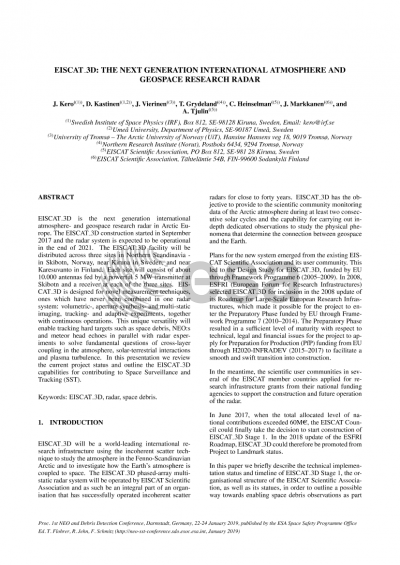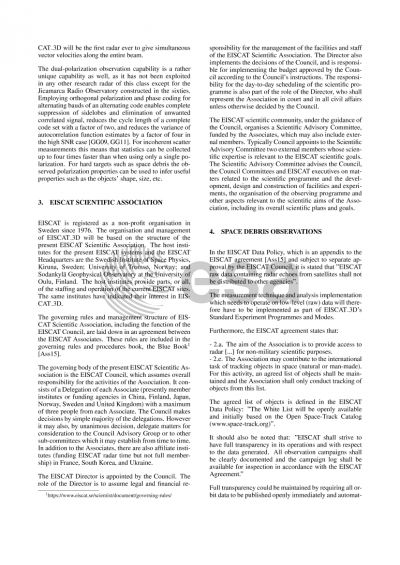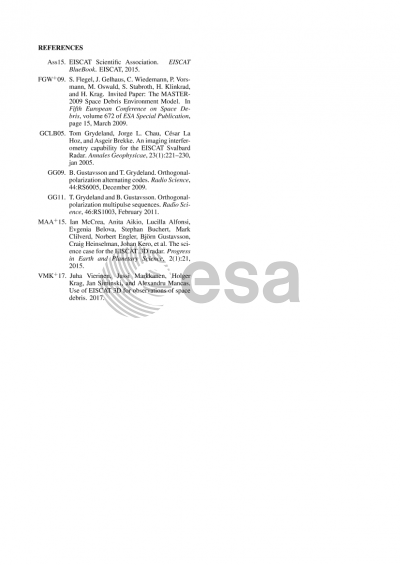Document details

Abstract
EISCAT_3D is the next generation international atmosphere- and geospace research radar under development in Arctic Europe. Construction have started in September 2017 and the radar system is expected to be operational in the end of 2021. The EISCAT_3D facility will be distributed across three sites in Northern Scandinavia - in Skibotn, Norway, near Kiruna in Sweden, and near Karesuvanto in Finland. Each site will consist of about 10.000 antennas fed by a powerful 5 MW transmitter at Skibotn and a receiver at each of the three sites. EISCAT_3D is designed for novel measurement techniques, ones which have never been combined in one radar system: volumetric-, aperture synthesis- and multistatic imaging, tracking- and adaptive experiments, together with continuous operations. This unique versatility will enable tracking hard targets such as space debris, NEO:s and meteor head echoes, in parallel with radar experiments to solve fundamental questions of cross-layer coupling in the atmosphere, solar-terrestrial interactions and plasma turbulence. In this presentation we review the current EISCAT_3D project status and outline its capabilities for contributing to debris detection/tracking research.
Preview






